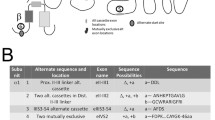Abstract.
Evidence from systems as diverse as mollusks, insects and mammals has revealed that adenylyl cyclase, cyclic adenosine 3′,5′-monophosphate (cAMP) cascade, cAMP-dependent protein kinases and their substrates are required for the cellular events underlying the short-term and long-term forms of memory. In Aplysia and Drosophila models, the coincident activation of independent paths converge to produce a synergistic activation of Ca2+/calmodulin-stimulable adenylyl cyclase, thereby enhancing the cAMP level that appears as the primary mediator of downstream events that strengthen enduring memory. In mammals, in which long-term memories require hippocampal function, our understanding of the role of adenylyl cyclases is still fragmentary. Of the differently regulated isoforms present in the hippocampus, the susceptibility of type 1 and type 8 to stimulation by the complex Ca2+/calmodulin and their expression in the hippocampus suggest a role for these two isoforms as a molecular coincidence device for hippocampus-related memory function. Here, we review the key features of Ca2+/calmodulin stimulable adenylyl cyclases, as well as the involvement of cAMP-regulated signaling pathway in the processes of learning and memory.
Similar content being viewed by others
Author information
Authors and Affiliations
Additional information
Rights and permissions
About this article
Cite this article
Mons, N., Guillou, JL. & Jaffard, R. The role of Ca2+/calmodulin-stimulable adenylyl cyclases as molecular coincidence detectors in memory formation. CMLS, Cell. Mol. Life Sci. 55, 525–533 (1999). https://doi.org/10.1007/s000180050311
Issue Date:
DOI: https://doi.org/10.1007/s000180050311




